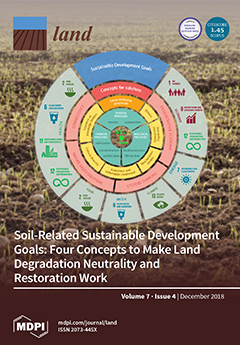Resource information
Agricultural land conversion (ALC) is an incentive-driven process. In this paper, we further investigate the inter-relationship between land economic value (LEV) and ALC. To achieve this goal, we calculated the LEV for agricultural and non-agricultural (housing) uses in two areas of East Java, Indonesia. The first area represents peri-urban agriculture, which is facing rapid urbanization and experiencing a high rate of ALC. The second area represents rural agriculture, with zero ALC. Furthermore, we identified factors affecting LEV in both areas for both uses. The results of this study show that agricultural land yielded a higher economic benefit in rural areas. Conversely, compared to agricultural land, housing in urban areas yields a value that is seven times higher. Moreover, agricultural land was shown to yield a higher profit after conversion. Ironically, a similar comparison does not exist in rural areas. Agricultural land yielded a value that was only 19% higher, indicating that agricultural land can easily be converted. This is also proven by the growing number of new urban cores in the periphery area. There are several factors affecting land economic value, such as agricultural use, soil fertility, accessibility, and cropping pattern, which are important variables. Meanwhile, the accessibility and location of peri-urban areas increase the land value for housing.


